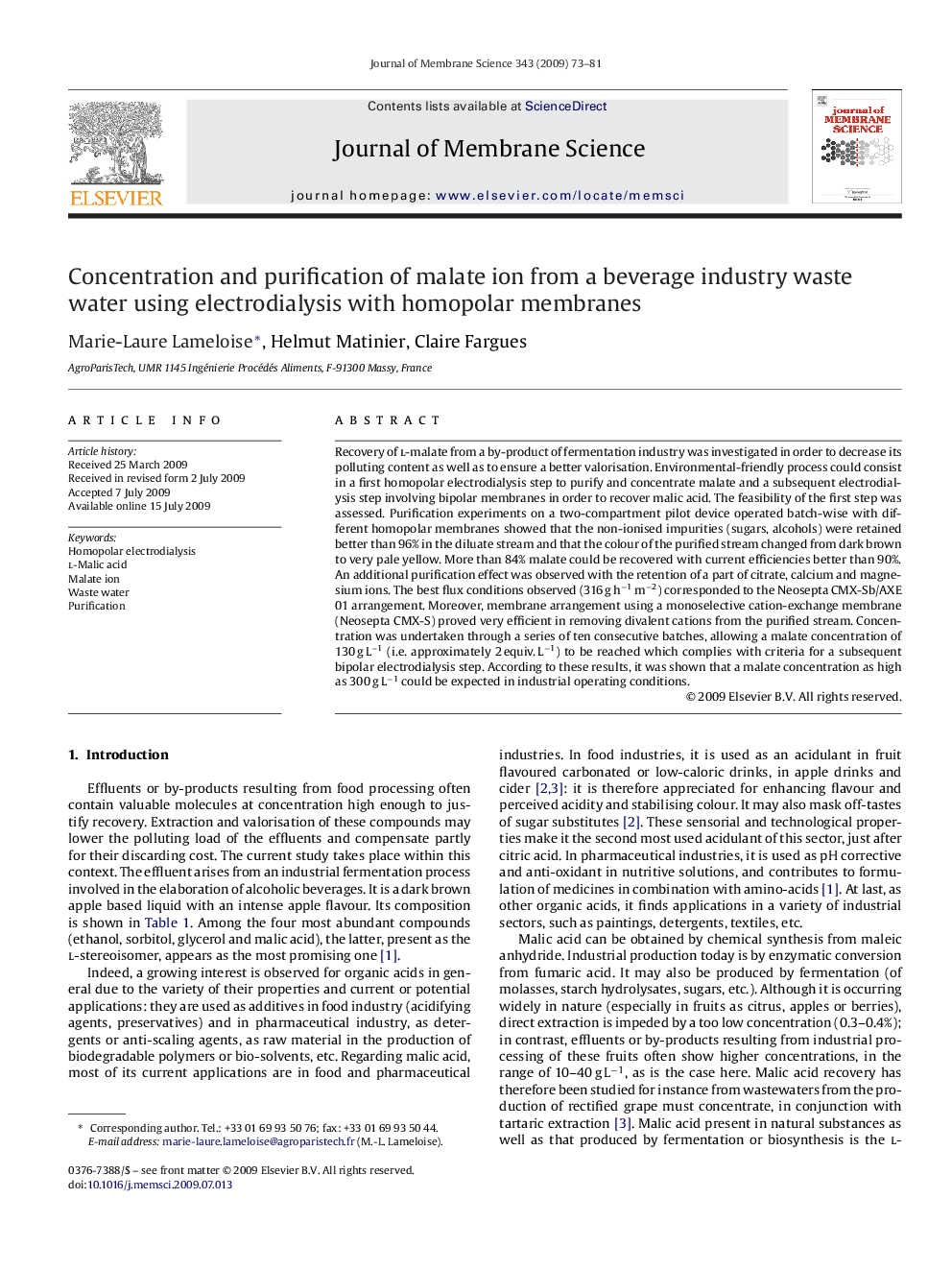| Article ID | Journal | Published Year | Pages | File Type |
|---|---|---|---|---|
| 636698 | Journal of Membrane Science | 2009 | 9 Pages |
Recovery of l-malate from a by-product of fermentation industry was investigated in order to decrease its polluting content as well as to ensure a better valorisation. Environmental-friendly process could consist in a first homopolar electrodialysis step to purify and concentrate malate and a subsequent electrodialysis step involving bipolar membranes in order to recover malic acid. The feasibility of the first step was assessed. Purification experiments on a two-compartment pilot device operated batch-wise with different homopolar membranes showed that the non-ionised impurities (sugars, alcohols) were retained better than 96% in the diluate stream and that the colour of the purified stream changed from dark brown to very pale yellow. More than 84% malate could be recovered with current efficiencies better than 90%. An additional purification effect was observed with the retention of a part of citrate, calcium and magnesium ions. The best flux conditions observed (316 g h−1 m−2) corresponded to the Neosepta CMX-Sb/AXE 01 arrangement. Moreover, membrane arrangement using a monoselective cation-exchange membrane (Neosepta CMX-S) proved very efficient in removing divalent cations from the purified stream. Concentration was undertaken through a series of ten consecutive batches, allowing a malate concentration of 130 g L−1 (i.e. approximately 2 equiv. L−1) to be reached which complies with criteria for a subsequent bipolar electrodialysis step. According to these results, it was shown that a malate concentration as high as 300 g L−1 could be expected in industrial operating conditions.
